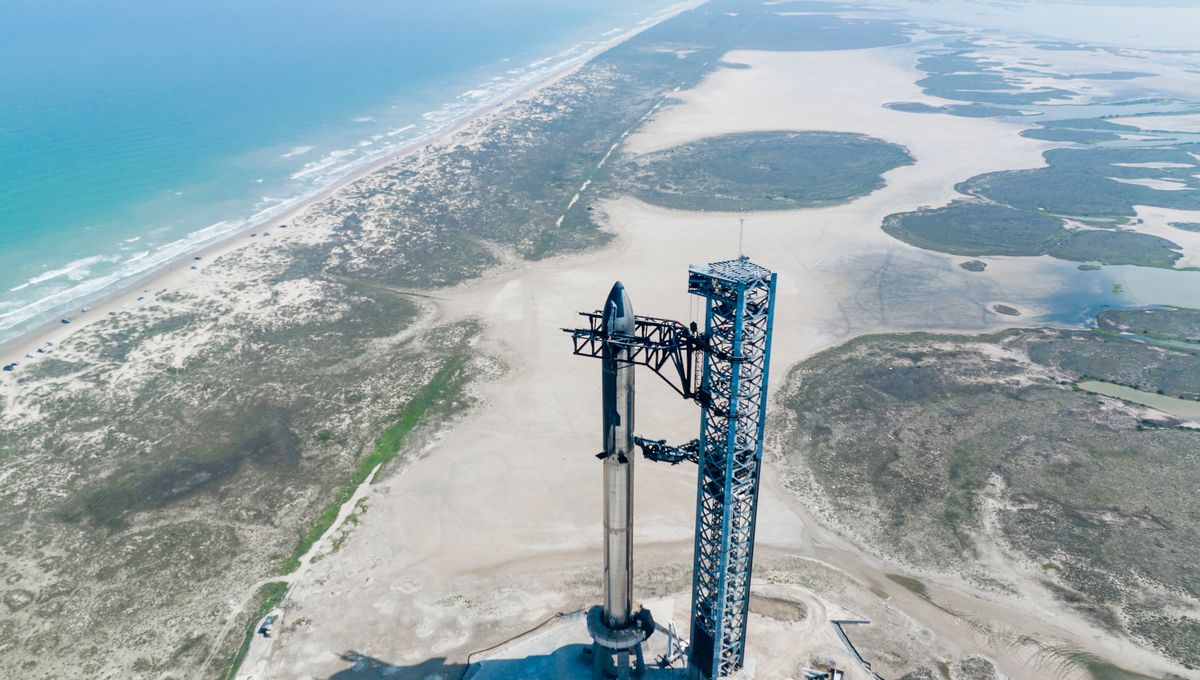Thursday, March 14 (Pi Day) has been set as the launch date for SpaceX Starship’s third attempt at safely launching, flying, and coming back down in one piece. A lot runs on this vehicle and this test being a success, given that Starship is going to be the landing system for the Artemis astronauts to go from lunar orbit to the surface of the Moon.
Partial successes and big explosions
The first launch took place in April 2023 and it has been described as a partial success. Starship was supposed to fly partway across the Earth after having separated from the launch vehicle. But separation did not happen, so SpaceX deliberately blew up the rocket to keep it from veering off course.
Several people considered the launch rushed at the behest of SpaceX CEO Elon Musk, who was keen to make a weed-related joke about the launch (it lifted off on 4/20). Many have pointed out that there was a distinct lack of safety measures and the launch damaged part of Starbase – its launch platform – blowing out a chunk of concrete from beneath its orbital launch mount and raining debris in the vicinity.
The second launch took place in November and it was also another partial success. The Super Heavy Booster exploded, but after it had separated from Starship. Unfortunately, contact with Starship was lost after 9 minutes and the onboard computers exploded the ship.
How to watch the third launch of Starship
The third flight test builds on the experience of the two previous ones, but aims to go further both in altitude and distance across the planet. Starship will in fact plan to splashdown in the Indian Ocean instead of near Hawai’i.
The live stream will be available on the SpaceX website and on X (formerly known as Twitter), and is expected to begin at 7:30 am ET (11:30 am GMT), with a launch 30 minutes later.
SpaceX is aiming to demonstrate the successful ascent burn of both stages – Starship and Super Heavy – as well as the opening and closing of Starship’s payload door. They want to perform a propellant transfer demonstration during the upper stage’s coast phase, as well as re-light a Raptor engine while in space for the first time. And last, but certainly not least, they want a controlled reentry of Starship.
The biggest and most powerful rocket ever built
Together, the Starship upper stage and the Super Heavy first stage booster are the biggest and most powerful rocket ever built. The whole setup is 122 meters (400 feet) tall when fully stacked, significantly taller than NASA’s Space Launch System (SLS) rocket, which reaches 98 meters (322 feet) in height altogether. SLS will take astronauts to lunar orbit and maybe beyond.
As mentioned, the success of Starship is critical to NASA’s plans to return humans to the Moon. SpaceX is to use the rocket to ferry astronauts to and from the Moon for the Artemis III and Artemis IV missions. Artemis III has already been postponed to 2026, but further problems with Starship might put this date in jeopardy.
We hope that the launch is a success as we can’t wait to see a Moon landing. Do you think it will fly?


